|
Sunday:
October 12, 2003 | |
0408 GMT |
 |
Mars orbiter shoots oblique view of Olympus Mons
This wide angle view of the giant martian volcano, Olympus Mons, acquired by the Mars Global Surveyor. The volcano is large enough to cover much of the U.S. state of New Mexico. This view was taken looking west toward the sunward limb of the planet.
 FULL STORY FULL STORY
 |  |
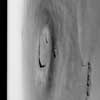
|
 |
IN OTHER NEWS Additional stories making news today
|
 |
NASA modified Space Flight Operations Contract -- NASA has modified the Space Flight Operations Contract with United Space Alliance of Houston for work in support of the Space Shuttle and International Space Station Programs.

NASA names new historian -- NASA has announced that Dr. Steven J. Dick is the new Director, History Office, and Chief Historian. He will assume his duties at NASA on November 3. Dick has worked as an astronomer and historian of science at the U.S. Naval Observatory since 1979.

Antarctic penguins thrive in ocean 'oases' -- NASA satellite data was used for the first time to analyze the biology of hot spots along the coast of Antarctica. The biological oases are open waters, called polynyas, where blooming plankton support the local food chain.
|
 |
|
Saturday:
October 11, 2003 | |
0124 GMT |
 |
Expansion of universe once sluggish, now speeding up
Exploding stars, called supernovae, that are three-quarters of the way across the universe have helped astrophysicists discover that the universe has expanded at different rates over its cosmic
history.
 FULL STORY FULL STORY
 |  |

|
 |
|
Friday:
October 10, 2003 | |
0642 GMT |
 |
Long-delayed weather satellite to fly Wednesday
It was a half-minute away from blastoff 33 months ago. Now, a U.S. Air Force weather observatory is finally poised to leave its troubled history behind and rocket into space.
 MISSION STATUS CENTER - updates MISSION STATUS CENTER - updates
 LAUNCH EVENTS TIMELINE LAUNCH EVENTS TIMELINE
 DMSP SATELLITE FACT SHEET DMSP SATELLITE FACT SHEET
 TITAN 2 ROCKET FACT SHEET TITAN 2 ROCKET FACT SHEET
 PREVIOUS TITAN 2 SLV LAUNCHES PREVIOUS TITAN 2 SLV LAUNCHES
 |  |
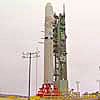
|
 |
First laser-powered aircraft successfully flies
Ever since the dawn of powered flight, it has been necessary for all aircraft to carry onboard fuel -- whether in the form of batteries, fuel, solar cells, or even a human "engine" -- in order to stay aloft.
 FULL STORY FULL STORY
 |  |
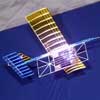
|
 |
IN OTHER NEWS Additional stories making news today
|
 |
Scientists use satellite to 'pond-er' melted Arctic ice -- NASA researchers and other scientists used a satellite combined with aircraft video to create a new technique for detecting ponds of water on top of Arctic sea ice. Until now, it was not possible to accurately monitor these ponds on ice from space.

NASA signs mission assurance agreement -- NASA signed a Memorandum of Agreement with the U.S. Department of Defense Missile Defense Agency. The agreement allows the two organizations to exchange information and collaborate on crucial matters affecting safety and mission success.
|
 |
|
Thursday:
October 9, 2003 | |
0409 GMT |
 |
Team picked to build NASA hypersonic vehicles
NASA has selected Allied Aerospace Industries to provide three experimental demonstrator vehicles that will fly approximately 5,000 miles per hour or seven times the speed of sound. The multi-year project, called X-43C, will expand the hypersonic flight envelope for air-breathing engines.
 FULL STORY FULL STORY
 |  |
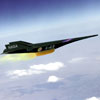
|
 |
Loral rejects new EchoStar offer to purchase its assets
Loral Space & Communication said that its board of directors has reviewed a letter from EchoStar Communications Corp. in which it indicated an interest in purchasing all of Loral's assets for $1.85 billion. EchoStar's proposal, which the board rejected, was subject to numerous conditions.
 FULL STORY FULL STORY
 |  |
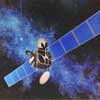
|
 |
NASA accepting proposals for student experiments
NASA's Reduced Gravity Student Flight Opportunities Program is accepting proposals from undergraduate teams across the country to fly their experiments on a unique agency airplane.
 FULL STORY FULL STORY
 |  |
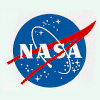
|
 |
|
Wednesday:
October 8, 2003 | |
0139 GMT |
 |
China on the cusp of its first human spaceflight
When the long-awaited event will be announced, very few know. Very few know the identity or details of the passenger(s) and exact flight plan for the mission. But many are aware of the importance and prestige associated with what is expected to occur in a matter of days.
 FULL STORY FULL STORY
 |  |
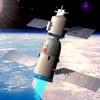
|
 |
SMART-1's ion engine tuned
After more than 32 hours of accumulated thrust, the electric propulsion system aboard the European Space Agency's newly-launched SMART-1 satellite is now fully tuned for nominal operations under space conditions.
 FULL STORY FULL STORY
 EARLIER STORY EARLIER STORY
 LAUNCH STORY LAUNCH STORY
 |  |
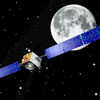
|
 |
NASA research propels development of new glass
There's a new glass in town. The glass, developed with the help of a unique NASA levitator facility, is available for numerous commercial applications including lasers and optical communications.
 FULL STORY FULL STORY
 |  |
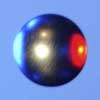
|
 |
|
Tuesday:
October 7, 2003 | |
0418 GMT |
 |
Cape's next-to-last Titan 4 rocket moved to launch pad
With a pair of Air Force locomotives pushing the way, Cape Canaveral's penultimate Titan 4 rocket was rolled from its assembly building to the launch pad Monday where it will undergo four months of work before hauling a missile-warning satellite into space.
 FULL STORY FULL STORY
 OUR TITAN 4 LAUNCH ARCHIVE OUR TITAN 4 LAUNCH ARCHIVE
 |  |
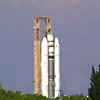
|
 |

Video coverage for subscribers only:
 VIDEO: TITAN 4 ROCKET BACKS OUT OF SMARF BUILDING QT VIDEO: TITAN 4 ROCKET BACKS OUT OF SMARF BUILDING QT
 VIDEO: THE ROCKET MAKES ITS WAY TO LAUNCH PAD QT VIDEO: THE ROCKET MAKES ITS WAY TO LAUNCH PAD QT
 SUBSCRIBE NOW SUBSCRIBE NOW

|
ICESat's lasers measure ice, clouds, land elevations
NASA's ICESat spacecraft has resumed measurements of the Earth's polar ice sheets, clouds, mountains and forests with the second of its three lasers. Crisscrossing the globe at nearly 17,000 miles per hour, this new space mission is providing data with unprecedented accuracy on the critical third dimension of the Earth, its vertical characteristics.
 FULL STORY FULL STORY
 |  |

|
 |
|
Monday:
October 6, 2003 | |
0033 GMT |
 |
Cluster's gain is galaxy's loss, Chandra shows
This image of the M86 galaxy shows gas being swept out of the galaxy to form a long tail more than 200,000 light years in length. Located in the Virgo galaxy cluster, this enormous elliptical galaxy is moving at about 3 million miles per hour through diffuse hot gas that pervades the cluster. The supersonic motion of M86 produces pressure that is stripping gas from the galaxy and forming the spectacular tail.
 FULL STORY FULL STORY
 |  |
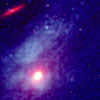
|
 |
NASA gives 'TIMED' more time to study atmosphere
NASA has extended the Thermosphere, Ionosphere, Mesosphere, Energetics and Dynamics (TIMED) mission for another three years of operations and data analysis beginning in January 2004 with an additional year of data analysis to be conducted after orbital operations are completed.
 FULL STORY FULL STORY
 |  |
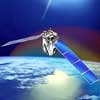
|
 |
Air Force orders another Minotaur rocket from Orbital
Orbital Sciences says the U.S. Air Force has ordered a Minotaur space launch vehicle to carry a classified payload in 2005. The new order increases the launch manifest for the Minotaur program to four missions to be carried out over the next two years.
 FULL STORY FULL STORY
 |  |
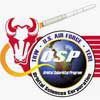
|
 |

